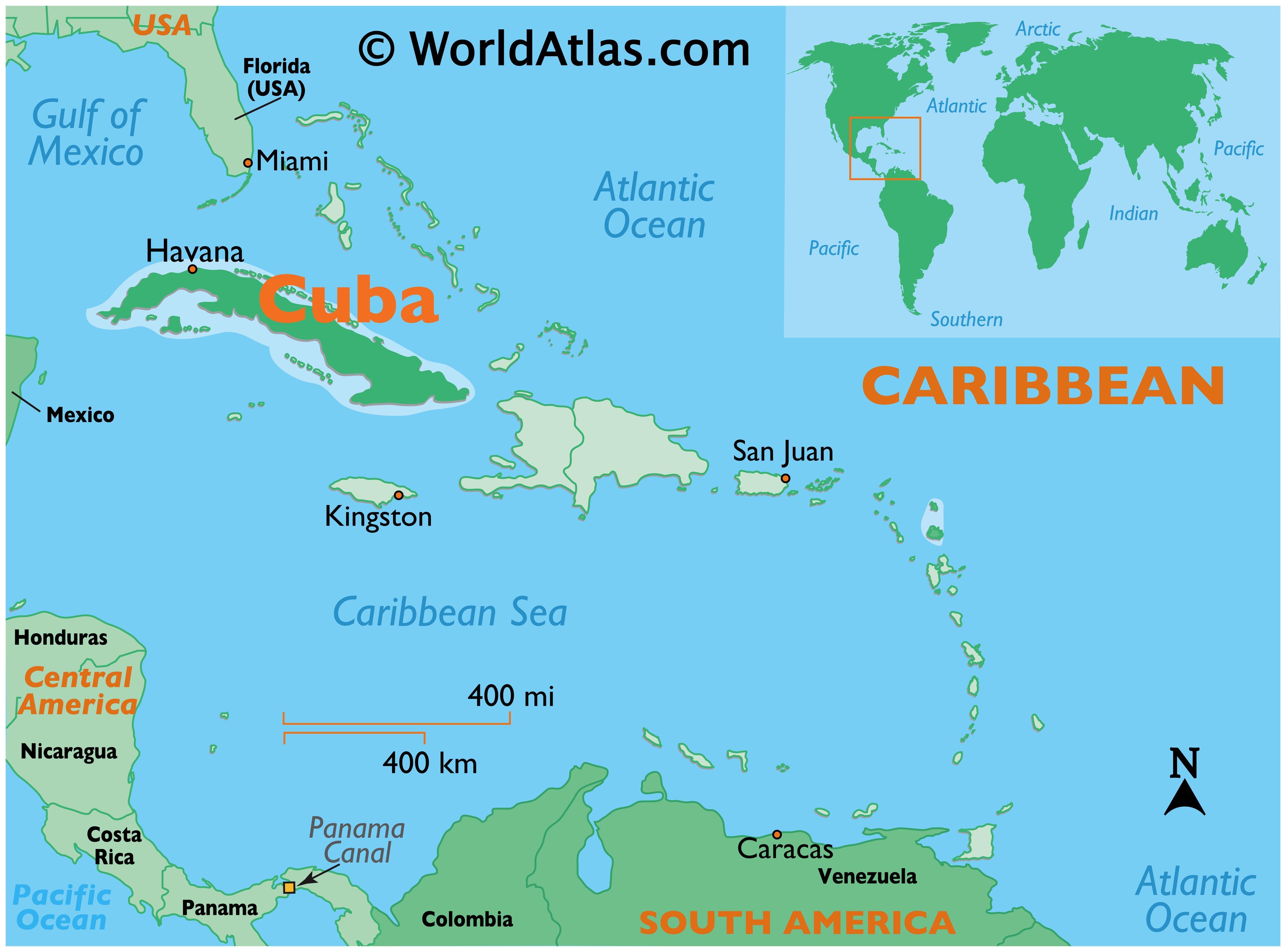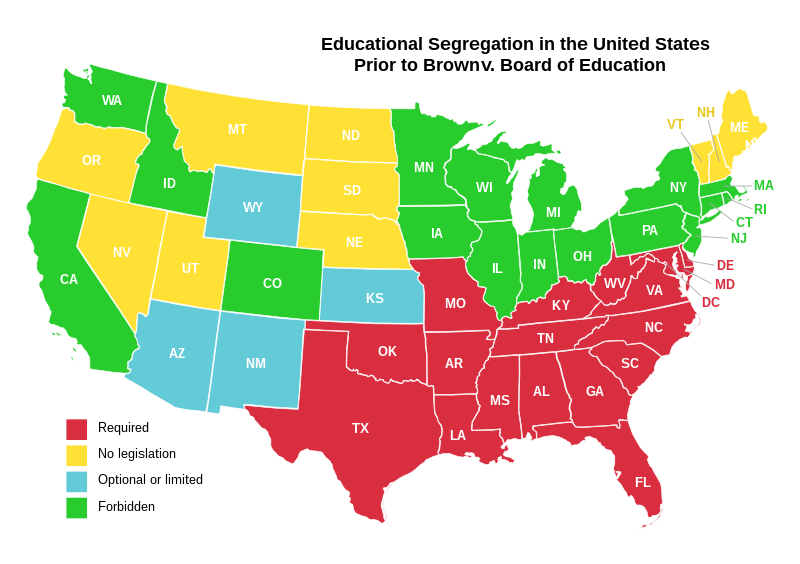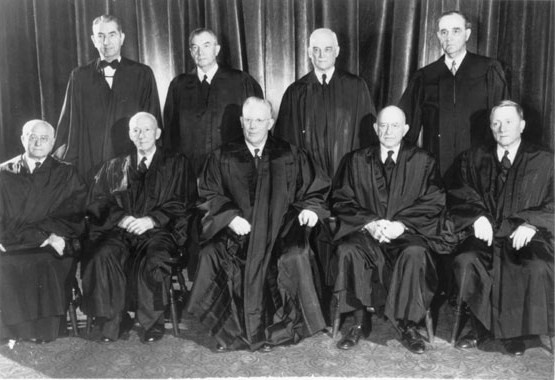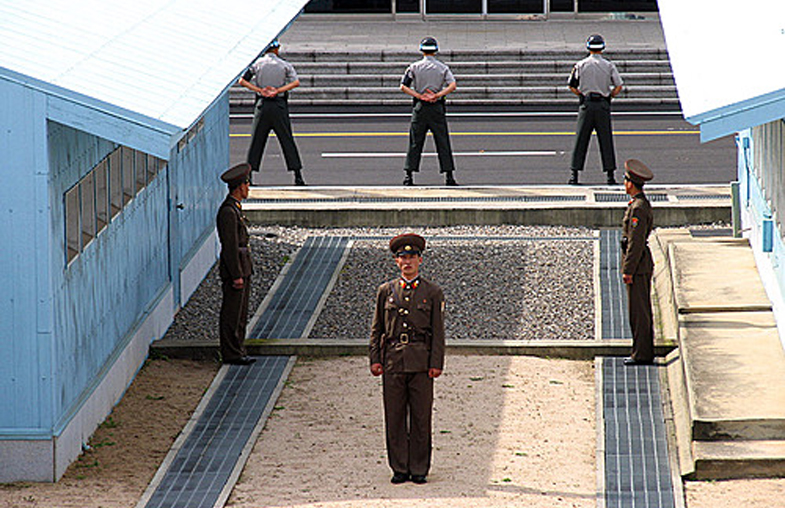I created this blog, Mr. Coates' History Class, as a tool for a hypothetical eleventh grade US History II class, and, over the month that I worked on it, I curated articles as if the classroom's units were spanning the years 1948 to 1963, focusing mainly on US history but including international events when appropriate. I personally wrote five longer form blogs, and included three written by friends who were writing as if they were my students. I also posted four shorter entries, with links to videos and podcasts, often ending with prompts that my pretend students would write. My blog also included a poll, a contact form, links to more resources, a section for upcoming homework assignment reminders, and an easily navigable directory of past articles. In addition to these sections of the blog itself, I also created a teacher twitter, @coateshistory , which I used as if I were teaching a course that used this blog and I posted on it whenever I had updated the blog.
This was easily my favorite assignment for this class (and perhaps any of my classes) this semester. I really enjoyed getting to design a blog, getting to write articles to a student audience, and enlisting my friends to write articles and to comment on mine (check out the comments on some of these entries to see what I am talking about, specifically the Eisenhower farewell address entry). I had had some previous experience using Blogger, as I used to run a film blog using it, so it was great to try new things within a comfortable framework. I would definitely try to do something similar to this if I found a class I thought I could integrate it well with, and I look forward to this prospect. The only problem with Blogger, and it was not a very big one at that, was that I could not play with the layout or format as much as I would have liked. I am happy with what I ended up with, but at times I was frustrated as I tried to change the way things were laid out and I found myself not being able to do it.
My advice to future students taking this course is to have fun with this project - if it starts feeling like a lot of work, try something else. Only write a blog if the prospect really excites you - while this was a joy to create it also was a lot of work, as I had to do research for each entry and ask several friends to get involved, and I had to be able to work around their schedules. I also had to work on it pretty consistently over two months to get an authentic blog feel - it would not have done to have posted all the articles at once. Experiment with different tools - the internet has several options for whatever you are trying to do. Be careful in writing your rubrics - that was the hardest part of this, in my opinion, as I was having trouble conceptualizing what my project would end up looking like. Be clear in the language you are using and do not trap yourself into doing things you might not be able to do.
Thank you to everyone who read, in my course and outside of it. I look forward to returning to history blogging someday soon.
Mr. Coates' History Class
A blog for Mr. Coates' US History II classes for the 2016-2017 academic year.
Sunday, December 4, 2016
Thursday, December 1, 2016
Who killed JFK Podcast
As we start to reach the time period before the holidays, we are going to continue delving into the presidency and assassination of John F. Kennedy. We are to have a special guest speaker deliver a presentation on this subject by the end of next week, so make sure to familiarize yourself with this historical event. To that end, I invite you to listen to this podcast from Stuff You Should Know titled "Who Killed JFK?" by following this link: http://www.stuffyoushouldknow.com/podcasts/killed-jfk.htm
Wednesday, November 30, 2016
Fidel Castro: Revolutionary and/or Tyrant
1926 - 2016
With the death of Fidel Castro Friday night and our shift in
focus from the Eisenhower administration to that of John F. Kennedy, it seems
appropriate that we look at the rise to power of Castro and why he, almost
sixty years later, still has politicians worldwide fiercely debating his place
in history.
On New
Years Day 1959, Cuban Dictator Fulgencio Batista was forced to flee the country
from Havana airport, following Castro’s successful guerilla war in the island
nation. Batista had ruled the country since 1952, and had actually imprisoned
Castro in 1953, but released him in an effort to appear less like a dictator. The
released Castro travelled to Cuba with a handful of allies, included his
brother Raul Castro and the revolutionary Ernesto “Che” Guevara. What happened
next is nothing short of incredible – travelling through rough seas for over
1,200 miles on a decrepit yacht called the Granma,
Castro and eighty fellow revolutionaries invaded Cuba on 2 December 1956. Hiding
in the mountains, Castro began to lead a guerilla campaign against the Batista
government, and this campaign was able to connect with the Cuban people.
Castro’s transition
to power in 1959 was anything but smooth. Early supporters who had hoped he
would end the dictatorship of Batista and bring democracy to Cuba, were
dismayed as he began to align himself to the Soviet Union, going so far as to
describe himself as a Marxist-Leninist in a speech around this time. In
response to demands that the US withdraw all but eighteen members from their
embassy in Havana, Eisenhower ordered that the US embassy close; it wouldn’t
reopen until 2015. An embargo from the US soon followed, forcing Cuba to rely
heavily on the Soviet Union to buy their sugar and otherwise prop it up economically.
The embargo
would prove to be the least of Cuba’s worries from the United States. On April
17, 1961, three months into the presidency of John F. Kennedy, a
counterrevolutionary army of over 1,400 exiled Cubans, armed and funded by the
CIA, attempted an invasion of Cuba, by way of creating a beach head at the Bay
of Pigs. Castro was prepared for this, and slaughtered the soldiers as they
landed. The counterrevolutionaries were not given the required air nor naval
power, and had failed to take the Cubans by surprised. The invasion was a
spectacular failure, and a complete surrender was offered after only three
days.
From the
Bay of Pigs invasion onwards, Castro would have firm evidence to show that the
United States could not be trusted. The ninety miles between Florida and Cuba
became a sea of distrust and suspicion. Increasingly paranoid, Castro requested
ballistic missiles from Nikita Khrushchev, the leader of the Soviet Union, to
deter future aggression from the United States. President Kennedy was not about
to let missiles to be held so close to the US border, so he sent naval ships
down to blockade the incoming Soviet ships. For thirteen days the heads of both
the United States and the Soviet Union scrambled for a diplomatic solution – in
the end, the Soviets turned around and went home, and the United States agreed
to pull its Jupiter missiles out of Turkey.
This successful
aversion of conflict by the Kennedy administration kept the Cubans from
becoming an existential threat. Castro stayed on as dictator for the next
forty-four years, but we have now reached the end of the history of what we are
concerned with in our class. Fidel Castro, the leader of a Caribbean nation of
eleven million people, certainly punched above his weight. No leader besides
Queen Elizabeth II held onto power longer in the western world. He jailed and executed
rivals, he suppressed free speech, and he continually agitated the United
States. He also improved the country’s access to quality healthcare, brought
about racial integration, and was to a degree successful in managing an economy
without any aid or trade from the United States. His legacy will remain hotly
debated by historians for years to come
Monday, November 28, 2016
John F. Kennedy Inaugural Address
Sunday, November 20, 2016
Three Songs
Listen to these songs by Phil Ochs and Bob Dylan. Read the lyrics along with them. How do these songs reinforce the culture of the 1960s? What are they referring to, specifically - such as when Ochs says "I hate Joe Enlai, I hope he dies"? Draw examples directly from the lyrics. Find one other song from the 1960s that fits these themes. Two paragraphs, due Wednesday.
Monday, November 7, 2016
Student Blog: Constitutionality and Brown v. Board
In 1954, the
United States Supreme Court declared that “separate, but equal” was no longer
constitutional in the United States, overturning Plessy v. Ferguson, and idealistically forcing an equal society for
the first time in U.S. history. The problem? That’s not quite what the decision
said.
Let’s
begin with the background—what lawyers refer to as “the facts of the case.” Thirteen
parents of Topeka, Kansas, public school students filed a class action to force
the district to reverse its policy of racial segregation. The plaintiffs lost
in the district court because, even though the court found that segregation in
public education had a detrimental effect on African-American children, the
schools were substantially equal with respect to buildings, transportation,
curricula, and education. By the time the case went to the Supreme Court, it
had been consolidated with five other cases representative of five other
states, all of which were sponsored by the NAACP. Fun fact: the lead attorney
on this case was Thurgood Marshall.
Things
went differently in the Supreme Court. First, the Court didn’t decide the case
in its first hearing. It asked for a second argument a year after to focus
specifically on the issues raised by the Equal Protection Clause. Second,
before that subsequent hearing, one of the very conservative justices died—to be replaced by Earl Warren, the architect of the single most liberal
Supreme Court in this nation’s history. Thus, in a sixteen page per curiam decision (per curiam being fancy Latin for a
unanimous court), the Court struck down racial segregation. The holding was
quite literally that segregated black and white schools of equal quality were
still harmful to black students, and therefore had to be unconstitutional under
the Equal Protection Clause.
The Warren Court
But
that is where this gets really
interesting. Two points: first, the Supreme Court relied on social science for
the first time in making this decision. The Court pointed to psychology and
other social science studies about the effect of segregation of the
African-American psyche. This was an unprecedented step. To that date, the
Supreme Court had based its decision in legal precedent and statutory
interpretation. To go beyond that, one might argue, was more akin to creating legislation,
rather than judging the law. And as we all know, the power to legislate rests
only with Congress. Second, and most importantly, the Supreme Court did not
automatically end segregation. Contrary to popular belief, Brown told the states to change “with all deliberate speed.” What
does all deliberate speed mean?” No one
really knows.
In
the end, it took a second decision for the Court to delegate orders that
desegregation occur. And it’s taken repeated litigation efforts to get the
Court to not only reaffirm its commitment to what has become affirmative
action, but also to make communities respect the mandate. The Supreme Court has
had to repeatedly decide cases about how schools should be run; how they should
treat their students; how busing routes should be driven; and
more. This may seem like what the Supreme Court is supposed to do, but let’s
remember the contours of the actual decision: was Brown meant to go that far? Or should Congress have stepped in and
done the actual governing? Should the individual state communities have created
their school standards? Should the Court have reviewed them on appeal, rather
than created the guidelines that individual communities then had to wrestle
with?
All these answers depend on your view of the Court’s role in our constitutional
structure. But at the end of the day, only the right to equality exists in the
Constitution. Separate but equal is unconstitutional. And so, perhaps, is a
Court that legislates from the bench.
By Laura Ferguson
Sunday, November 6, 2016
The Korean War: Police Action
The Korean Demilitarized Zone
Roughly
halfway down the Korean peninsula lies the Demilitarized Zone, an armored
border stretching roughly two hundred and fifty miles from the east coast to
the west coast and about two and a half miles wide throughout. This border
divides the peninsula into The Democratic People’s Republic of Korea, or North Korea,
from the Republic of Korea, or South Korea. This border, which runs on the 38th
latitudinal parallel, holds in place a shaky cease-fire that was signed in 1953
following the end of the Korean War. How and why was Korea divided? To
understand that we must turn the clocks back to the late 1940s, and trace the
origins and the fallout of the Korean War.
Towards the end of the Second World War the Soviet Union joined her allies in the war against
Japan. Soviet troops made their way halfway down the Korean peninsula before
the bombings at Hiroshima and Nagasaki signalled the end of the war, and
thereafter Korea was occupied and controlled by a joint Soviet and American
Military Government. This commission failed to make progress on creating an
independent Korea, and elections held in 1948 attempting to set up a new
sovereign state were met with boycotts and violence from the Korean communists.
The results of these elections set up a government located in the Southern city
of Seoul, while the Soviets set up a communist government based out of
Pyongyang soon thereafter, led by a man named Kim Il-Sung. This was followed by the United States
and Soviet Union pulling out of the Korean peninsula by 1949, and allowing
these two new states to develop on their own. Both sides, however, began planning for future reunification - peacefully or otherwise.
In
1950 Kim Il-Sung, backed politically and economically by the Soviet Union and
militarily by the newly formed Communist Chinese state, invaded South Korea,
believing that the people would welcome him as a liberator. As Russia was
boycotting United Nations meetings and the Communist Chinese weren’t yet internationally recognized, the Security Council voted unanimously to have member states
support South Korea militarily that June. However, by September the
Communists had overrun almost the entirety of South Korea; something drastic
was needed. On September 15, the United Nations began the battle of Inchon, an amphibious invasion under the
command of General Douglas MacArthur that provided a clear victory and a
strategic reversal. Within the next two months
MacArthur’s forces would push their way northwards, soon making their way
passed the 38th parallel and eventually to within miles of the
Chinese border. This was met with a major invasion by the Chinese, which pushed
the fighting back to the 38th parallel, where the fighting was localized
for the remainder of the war.
These
quick troop movements up and down the peninsula before settling into a longer
stalemate at the 38th parallel were incredibly deadly. The majority of the
war’s casualties fell in this period, which included some 2.5 million between both
sides. Halfway through 1951 both countries accepted that they had reached a
stalemate, and little territory was exchanged as fighting continued. General
MacArthur argued that the allies should extend the war into China, which was rebuked by the US government as many feared this would lead to another world war. He sent cables to members of the House of Representatives
defending his position, and in response President Harry Truman demanded his
resignation. Over the next two years, the two Koreas sought to create a peace
deal, but no resolution could be found that both sides could find agreeable.
During these two years of protracted negotiation Dwight Eisenhower was elected
US President. He had campaigned on ending the Korean War, and immediately set
out to do so. In 1953 an agreement was reached, not in the form of a treaty, but rather a cease-fire;
to this day, the two Koreas technically remain at war.
Discussion
questions, write a paragraph for one:
In many Anglophonic nations, the Korean War
is referred to as the “Forgotten War” – why might this be the case?
Was the United Nations right to act on a
vote that would put the members at war with the Soviet Union and China when
neither was represented in the vote? Why or why not?
President Truman famously referred to the war as "Police Action" - why might he choose to use this phrase to describe such a brutal war that had broad international support?
Subscribe to:
Posts (Atom)






